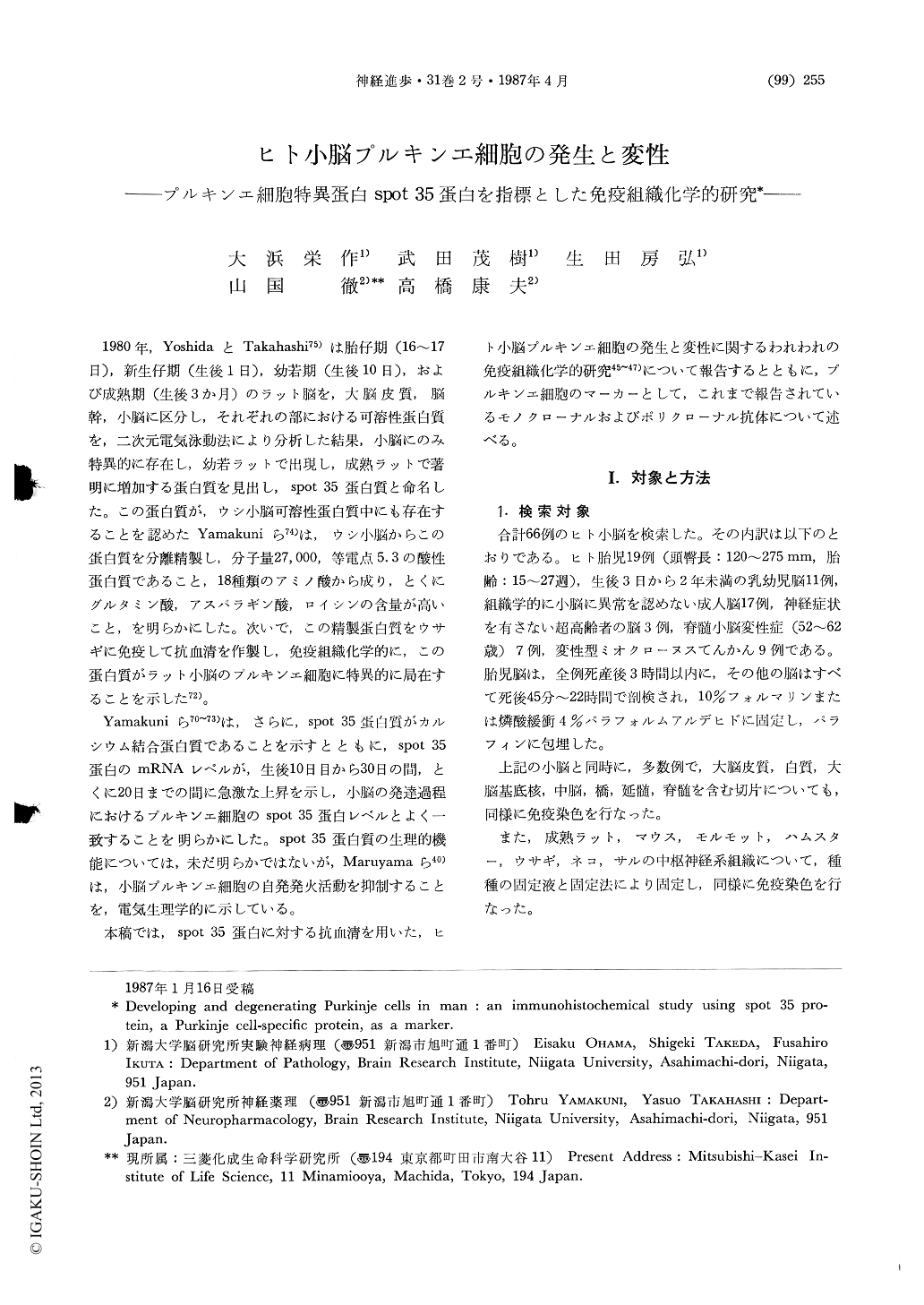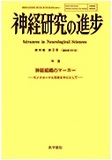Japanese
English
- 有料閲覧
- Abstract 文献概要
- 1ページ目 Look Inside
1980年,YoshidaとTakahashi75)は胎仔期(16〜17日),新生仔期(生後1日),幼若期(生後10日),および成熟期(生後3か月)のラット脳を,大脳皮質,脳幹,小脳に区分し,それぞれの部における可溶性蛋白質を,二次元電気泳動法により分析した結果,小脳にのみ特異的に存在し,幼若ラットで出現し,成熟ラットで著明に増加する蛋白質を見出し,spot 35蛋白質と命名した。この蛋白質が,ウシ小脳可溶性蛋白質中にも存在することを認めたYamakuniら74)は,ウシ小脳からこの蛋白質を分離精製し,分子量27,000,等電点5.3の酸性蛋白質であること,18種類のアミノ酸から成り,とくにグルタミン酸,アスパラギン酸,ロイシンの含量が高いこと,を明らかにした。次いで,この精製蛋白質をウサギに免疫して抗血清を作製し,免疫組織化学的に,この蛋白質がラット小脳のプルキンエ細胞に特異的に局在することを示した72)。
Yamakuniら70〜73)は,さらに,spot 35蛋白質がカルシウム結合蛋白質であることを示すとともに,spot 35蛋白のmRNAレベルが,生後10日目から30日の間,とくに20日までの間に急激な上昇を示し,小脳の発達過程におけるプルキンエ細胞のspot 35蛋白レベルとよく一致することを明らかにした。
The spot 35 protein is a cerebellar Cabinding protein which had been shown immunohistochemically to be localized in the cell bodies, dendrites and axons of the Purkinje cells of adult rat. Using the antiserum against the protein, we studied the morphology of the developing and degenerating human Purkinje cells by the peroxidase-antiperoxidase method.
We examined a total of 66 human brains.They included 19 fetuses (15 to 27 weeks of gestation), 11 infancies (3 days to 2 years old), 3 ultrasenile brains (over the age of 100) without neurological diseases, 7 brains of spinocerebellar degeneration (52 to 66 years old), 9 brains of degenerative type of progressive myoclonus epilepsy and normal adult brains. The fetal brains were obtained 1 to 3 hours after death following therapeutic or spontaneous abortions. All the other brains were obtained at autopsy 45 minutes to 22 hours after death. The brains were fixed with 10% formalin or 4% paraform aldehyde solutions and embedded in paraffin. Sagittal and parasagittal sections, 6 pm thick, were cut serially from cerebellar vermis and hemispheres including the dentate

Copyright © 1987, Igaku-Shoin Ltd. All rights reserved.


